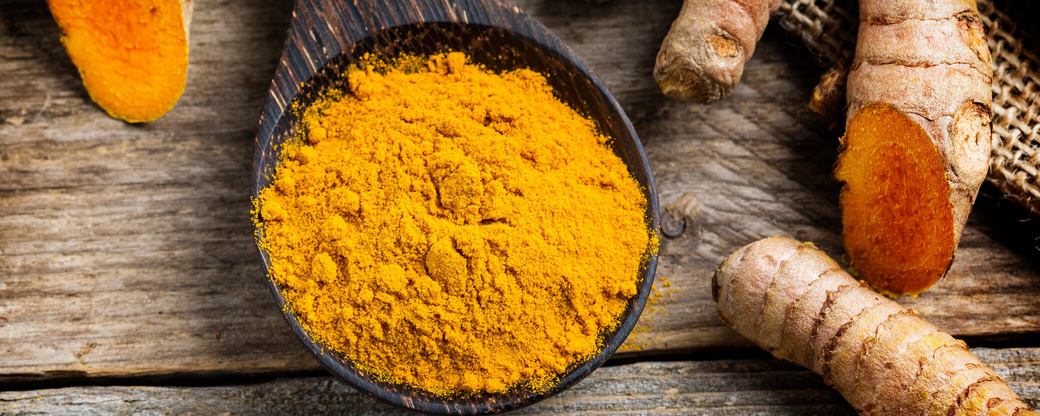Curcuma longa, the technical name for the ginger plant, comes from South Asia and is cultivated in the tropics. It is an approximately 1 m tall plant that forms tubers on the rootstock. These resemble ginger tubers on the outside, but are an intense yellow colour. This colour comes from the ingredient curcumin, which makes up the main part of the tuber with 60 %.
Turmeric has been used as a spice in India for thousands of years, for example in every typical curry mixture. In addition to this use, turmeric has also been an important remedy in Ayurvedic medicine for thousands of vears, where it is used to treat wounds and rashes. The ingredient to which the plant's effectiveness is attributed is curcumin, which is also responsible for the yellow colouring.
There are numerous human and veterinary studies that investigate the influence of curcumin on various problems (1-). In particular, the presumed anti-inflammatory and antioxidant properties are being investigated, which can also have a positive influence in the areas of skin-fur, joints, neoplasia or infections.
(1) Campigotto et al. (2020): Dog food production using curcumin as antioxidant: effects of intake on animal growth, health and feed conservation. Arch Anim Nutr. 74(5):397-413.
(2) Gupta et al. (2013): Curcumin, a component of turmeric: from farm to pharmacy. Biofactors. 39(1):2-13.
(3) Kotha und Luthria (2019): Curcumin: Biological, Pharmaceutical, Nutraceutical, and Analytical Aspects. Molecules. 24(16):2930.
(4) Levine et al. (2017): Cellular effects of a turmeric root and rosemary leaf extract on canine neoplastic cell lines. BMC Vet Res. 13(1):388.
(5) Sgorlon et al. (2016): Nutrigenomic activity of plant derived compounds in health and disease: Results of a dietary intervention study in dog. Res Vet Sci. 109:142-148.
(6) Vollono et al. (2019): Potential of Curcumin in Skin Disorders. Nutrients. 10;11(9):2169.
